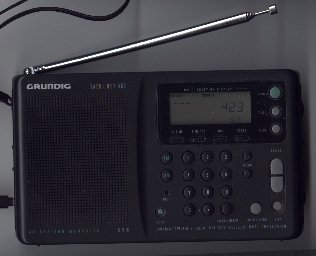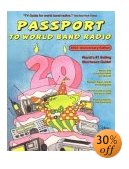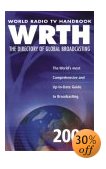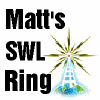 |
Welcome to my shortwave radio page! I started listening to shortwave radio in the fall of 1994, with a Radio Shack DX-375. I have since upgraded to a Grundig YachtBoy 400 (pictured on the left,) and have 15 meters of wire strung up around the room as an antenna. Reception isn't as good in California as it is in Iowa, mainly due to interference from local AM stations. Maybe those mountains behind the house cause some problems, too.... Being on the coast, though, may help with receiving Asian/Pacific stations. On this page you will find links to other interesting shortwave radio pages (including several for schedules, propagation tables, and station information) and my collection of QSL cards. With more news/information being "broadcast" by Internet everyday, shortwave radio may seem less and less like a viable idea. However, there are a number of countries, organizations, and people who wish their voices to be heard, and are unable (or unwilling) to use the Internet. For these people, radio is the way to go. Not to mention, my radio runs on a few AA batteries, which is more then I can say for my computer. That said, there are quite a few stations who also broadcast via RealAudio. I have created a list of these stations, and have been adding direct links to the RA files. |

 Passport
to World Band Radio
Passport
to World Band Radio



